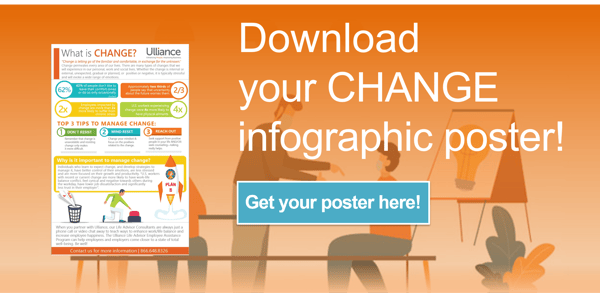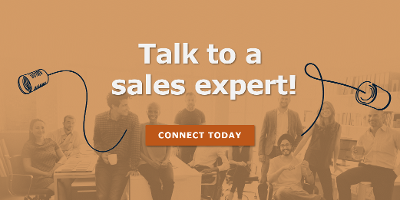HRs New Role in the Historic Pivot to the "New Workplace Normal"
Individual emotions about Covid-19 run the gamut from complete fear and anxiety to barely a thought. For some, returning to the workplace can cause distress and uncertainty. For others, getting back to the office might be a relief.
Either way, it is important to remember the workplace pre-Covid and post-Covid, are not the same. There will be adjustments to make and even small changes in a routine can be mentally tiring. Employees who look forward to getting back will still likely be faced with unexpected stressors and obstacles.
It is going to take resiliency, adaptability and understanding to create a system. There isn’t a handbook or guidelines to follow. No one knows precisely how getting back into the office will work, or how long it will take. Be prepared to be flexible. And don’t forget to communicate and promote your organization’s EAP to support employees during this transition.
Communicate – Share the Plan
Begin communicating to your team as soon as you know it’s time to transition from remote work to the office. When people are left to assume, they'll often assume the worst. So, try to minimize the unknowns, and present the reality with an upbeat tone.
Listen to people's concerns.
Kim Cser, a government employee, expects to hear about her return to work date any day now. "I don't know how I will manage going back to the office if my kids are still distance learning. I can't leave them home alone." Parents with young children will need childcare. Perhaps until schools resume in-person classes, Kim can continue her work from home and transition at a slower pace.
Other people may like the flexibility that working from home offers them.
Like Jill Conner, an administrative assistant, says, "I have come to like working from home. I don't have to get up at the crack of dawn and rush to get ready. And the commute! I love the commute. I'm on time the second I get out of bed. I hope I don't ever have to go back to the office, but if I do, I hope it's a hybrid where we work in the office part-time and at home the rest of the time."
Your employees' needs will vary, but just as workers quickly and skillfully learned to adapt to working from home, they will now look to you to offer the same support as they return.
The (Flexible) Plan
Remote work has allowed most people to try a new way of working. According to a Slack article, Moving Beyond Remote: Workplace Transformation in the Wake of COVID-19, when polled, most office workers preferred working from home. Globally, 72 percent of workers prefer a hybrid arrangement that combines the home and office. Something many companies wouldn't consider prior to the pandemic.
How will this post-pandemic workplace environment look? No one knows yet. But having a solid plan is going to be key to managing people's fear and anxiety. The more uncertain things are, the faster false information spreads. Ambiguity feeds rumors, and without a workable approach to share, falsehoods become truths in the employee's mind.
When formulating The Plan, let the guidelines support everyone's health, safety, and well-being. Doing so will help guide you on best practices and solutions.
Most plans will need to provide guidelines on cleaning and disinfecting surfaces, room capacity, wearing of masks in the workplace, and whatever other procedures your local government has mandated. But your office may have special requirements. Keep an eraser handy (or the delete button) though because, like everything else, the only certainty is change. What works today may be completely different tomorrow.
Consider bringing employees back in stages, beginning with those who want to return. Understand what your workers love and hate about working in the office and create a work experience that can vary across populations.
Asking for input before implementing a return-to-work plan is a terrific way to show employees that you acknowledge their concerns. And they may have ideas that you haven't thought of yet. This is valuable information for executing a return-to-the-office strategy.
Show that You Understand and Respect Their Concerns
Communication is essential. There are no two ways about it; actually, there are two ways about it. Your way and their way. These "ways" do not have to clash. The more thoughtful the plan, the higher the chance it will be successful.
There will be new hardships, complaints and uncertainties transitioning back to the office, but leaders can use previous insights to develop a new workplace 'normal' that supports everyone.
And don't be surprised to find that some employees will be eager to return to the office. Playing mom, wife, teacher, referee, social director, taskmaster, and housecleaner 24/7 makes even the most energetic supermom weary.
Kris Collier, an insurance agent, is finding that working from home is not as easy as she thought it would be. She says, "some days, I wish I could just get back to a normal routine. I used to drop the kids at school and go on to work and then come home at the end of the day. Easy. Now, every day is constant arguing and badgering with my kids to get their work done and I'm stuck working after they go to bed. " Kris Collier - Insurance Agent
Implement Your (Flexible) Plan
Now that you have formulated a plan that takes employee ideas and concerns into consideration, it is time to communicate and enforce it. Compassionately. People like to know their feelings matter, especially in a world they don't know how to navigate yet.
There is a handy model for organizations that are supporting workers moving through changes. The Proci ADKAR model is a "goal-oriented change management model that guides individual and organizational change." Founded by Jeff Hiatt, ADKAR is an acronym that represents the five tangible and concrete outcomes that people need to achieve for lasting change: awareness, desire, knowledge, ability, and reinforcement. (Hiatt.)
5 Outcomes Needed for lasting Change
1. Awareness of the need for change.
In the awareness stage, employers need to make a concentrated effort to engage with workers. Don't send out a one-time company email to all "relevant personnel" outlining the plan. Managers need to explain the changes and discuss how they will affect each individual's workday. This can be done through training, webinars or team meetings.
2. Desire to participate in and support the change.
Making an effort during the awareness stage will help set the next step, Desire to Change. Once employees are engaged and have the desire for change, you can move to the next stage.
3. Knowledge on how to change.
Your guidelines on transitioning will be the knowledge employees need regarding how to change. More than that though, people will also need to know what to do once the change has been implemented. What does their workday look like?
4. Ability to implement required skills and behaviors.
Ability is the practice of applying these changes and it can take time to adapt to the new way of things. Supporting the individual through coaching and constructive feedback will increase their ability to quickly implement changes.
5. Reinforcement to sustain the change.
This final stage is essential for long term compliance. To ensure changes stay in place once they are implemented, provide positive feedback and recognition to jobs well done. It is also important to take time to measure employee performance and take immediate corrective action when necessary.
Remember, companies don't change. Individuals do. By outlining goals and desired outcomes along with step-by-step support as employees navigate the return to work, the "new normal" can become normal.
Now more than ever, your employees need emotional support and resources. The pandemic has created a whole new set of physical, financial and emotional stressors that have woven their way into the home and workplace.
Hundreds of organizations support their employees through The Ulliance Life Advisor Employee Assistance Program (EAP). Investing in the right EAP to support your employees before, during and after they face adverse events will help them and help you. Visit www.ulliance.com, or call 866-648-8326.
When you partner with Ulliance, our Life Advisor Consultants are always just a phone call away to teach ways to enhance your work/life balance and increase your happiness. The Ulliance Life Advisor Employee Assistance Program can help employees and employers come closer to a state of total well-being.
Combining years of clinical experience and the formation of a meaningful partnership with an organization’s human resources department, Ulliance is among the best EAP providers, and our experts can tailor recommendations for a variety of work\life circumstances.
Investing in the right EAP or Wellness Program to support your employees will help them and help you. Visit www.ulliance.com, or call 866-648-8326.
The Ulliance Employee Assistance Program can address the
following issues:
• Stress about work or job performance
• Crisis in the workplace
• Conflict resolution at work or in one’s personal life
• Marital or relationship problems
• Child or elder care concerns
• Financial worries
• Mental health problems
• Alcohol/substance abuse
• Grief
• Interpersonal conflicts
• AND MORE!



